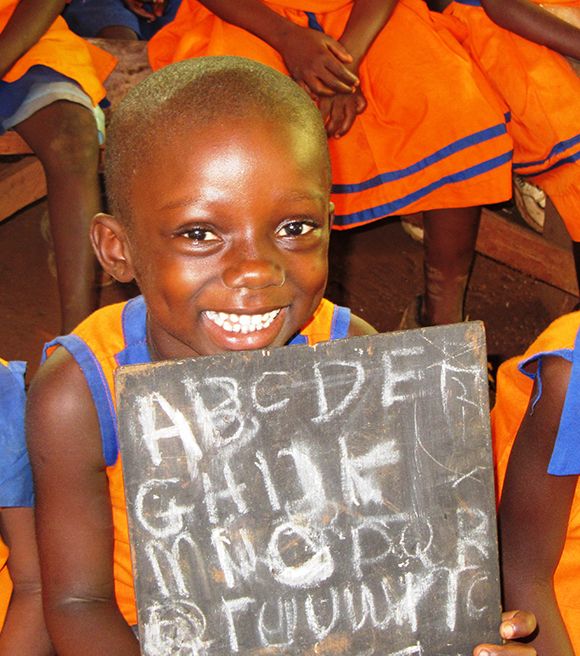In 2001, former U.N. Secretary-General Kofi Annan called for the creation of a war chest to fight AIDS, tuberculosis and malaria. HIV rates were skyrocketing globally, and we were losing an entire generation of adult men and women in Africa. The international community responded in force, forming the Global Fund and various bilateral initiatives to tackle these public health threats. The impact of these efforts have been nothing short of astounding. Between 2005 and 2015, access to antiretroviral therapy sharply increased and AIDS-related deaths fell by 45 percent worldwide.
The emergency response to AIDS demonstrated what can be accomplished when the international community comes together with clear goals and targets. Having worked on health system improvements both domestically and abroad, I have seen the far-reaching and positive impact of global health investments, including the strengthening of local health systems and the improved capacity of local health workers. Now, more than ever, we need this kind of collective commitment — and financial support — for education.
A new report published by the International Commission on Financing Global Education Opportunity (The Education Commission) warns of a global learning crisis that threatens to undermine the most fundamental development goal: ending extreme poverty. Though there are many competing global priorities that demand attention, investing in education — like health — has many cross-cutting and long-lasting benefits. And the costs of failing to prioritize funding for education is high.
To avoid a global learning crisis, the Education Commission advocates transformative action in four areas: strengthening performance of education systems; fostering innovation; prioritizing inclusion of those most at risk of being left behind; and mobilizing more financial resources.
At the heart of the Commission’s proposal is a call for developing countries and the international community to enter into a Financing Compact for a Learning Generation — to band together for education in the same way they have worked to tackle the threat of infectious diseases.

Global learning crisis
Unlike efforts to combat a public health crisis, the impact of investments in education won’t be immediately apparent. The learning crisis worsens every day, and requires immediate action to prevent more serious long-term repercussions.
Why now? The reality is that, globally, employers are already finding it difficult to recruit people with skills they need. As demand for high-skilled workers rises, many low- and medium-skilled jobs are becoming increasingly obsolete. What’s left is a lot of low-paying, unstable jobs.
This is particularly troubling as youth unemployment is a strong predictor of social unrest. Developing countries are home to the overwhelming majority of young people, a group disproportionately affected by unemployment. A “ticking time bomb of discontent” poses a serious threat to security in the Middle East, the East Indian subcontinent and Africa.
Around the world, 263 million children and young people are out of school. Moreover, 330 million primary and secondary school students who are in school do not achieve even the most basic learning outcomes for their level. And in developing countries, in particular, only half of students in primary school and one-fourth of secondary school students are learning basic skills like reading, writing and numeracy.
Education is key to breaking the cycle of poverty, but the poorest 5 percent are, on average, 32 percent less likely than the richest 5 percent to complete primary school. If we don’t mobilize the necessary resources, more than 1.5 billion adults will have no education beyond primary school by 2030 and twice as many girls as boys will never start school.
The costs to fill this global financial gap are undoubtedly high. But the case for investment is clear. Education and skills are essential for realizing individual potential, enhancing national economic growth and social development, and fostering global citizenship. In the coming decades, as technology, demographic change and globalization reshape the world we live in, they will become ever more important.
Most high-income countries recognize the importance of education and invest heavily to increase their economic competitiveness and success. To achieve the Sustainable Development Goals (SDGs), they should also prioritize education investments in developing countries.
Value for money
It’s a common refrain: We can achieve more with more funding. And that’s true, but we can also maximize our investments through smarter, more strategic budget allocations. Although education funding must increase, governments also need to focus on spending where the impact will be greatest.
Investing in quality early childhood development (ECD) services, in particular, such as pre-primary education, parenting support, nutrition and home visiting, can yield greater economic returns than interventions provided later in life. Evidence from low- and middle-income countries, such as Mozambique and Jamaica, have shown that participation in ECD services can contribute to increased primary school enrollment, better cognitive performance and higher wages, among other benefits.
Focusing on women and girls also pays dividends. Higher levels of education, especially girls’ education, have significant impacts on life expectancy and mortality. Despite so much direct spending on health, one-third of the reductions in adult mortality (approximately 100 million) and nearly 50 percent of the reductions in infant mortality (approximately 30 million) between 1970 and 2010 can be attributed to girls’ education. In addition, a child whose mother can read is 50 percent more likely to live past age 5, 50 percent more likely to be immunized and twice as likely to attend school.
Smarter investments also mean focusing on improved learning outcomes and ways to ensure kids actually learn. Four recommendations from the Education Commission report include:
- Take a multi-sectoral approach. Invest across sectors to tackle the factors preventing learning.
- Go with what you know. Invest in proven interventions and services such as mother-tongue instruction and preschool education.
- Ensure accountability. Set standards, track progress and make information public.
- Strengthen stakeholder engagement. Improve partnerships with non-state actors.
These same approaches have worked for the health sector. It’s time to make them work for education.
The reasons for investing in education mirror those of health: both are basic human rights and vital to helping people thrive and reach their full potential. Access to quality education is essential to helping people escape extreme poverty and live full, meaningful lives. To achieve the SDGs by 2030, we need to ramp up investments immediately.
As a research partner for the Education Commission, Results for Development conducted an analysis to identify the reforms needed for education financing transformation and more effective education delivery. This research was synthesized in a set of background papers set to be released soon.
